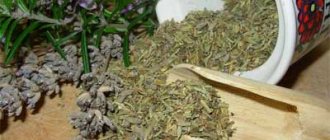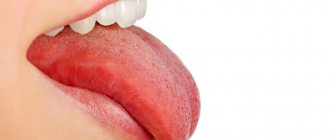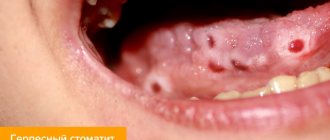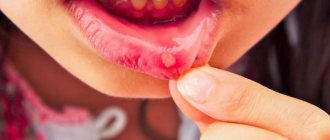Causes of stomatitis
In children, as in adults, stomatitis can be caused by viruses, fungi, bacteria, allergies and injuries. About six months after birth, the child loses the immunity received from the mother, the protective power of the immune system changes, and the child’s body becomes more susceptible to infections. The oral mucosa in children is more delicate and easier to injure; children also more often “bite” their cheeks after dental treatment due to a temporary loss of sensitivity after anesthesia, which causes traumatic stomatitis.
Children are not always motivated to brush their teeth, so poor hygiene can also cause stomatitis.
With the following diseases, stomatitis is observed in children much more often: chronic tonsillitis, diabetes mellitus, heart defects, chronic hepatitis.
Why does the disease appear?
In order to quickly cope with the disease and prevent re-infection, it is necessary to find out the reason that provoked the growth of pathogenic flora on the mucous membranes of the oral cavity. The main factor leading to the development of infectious forms of stomatitis is non-compliance with sanitary and hygienic standards for the treatment of toys, premises and objects surrounding the child. Bacteria and germs can enter the child's body from rattles, the surface of the changing table, and pacifiers. The development of fungal flora is often caused by insufficient sterilization of bottles (in children who are bottle-fed or mixed-fed).
Aphthous stomatitis in children
If a child has had conjunctivitis or other infectious diseases, it is necessary to carefully treat all the furniture and toys in the children's room, and also wash the bedding on which the baby slept at high temperatures. If the type of fabric allows, it is best to wash at a temperature not lower than +90°C, then iron it on all sides using the steam mode.
Lack of hygiene is not the only reason for the development of infectious processes in the oral cavity. Experts believe that the main role in the mechanism of the appearance of stomatitis belongs to the immunological factor. If a child has a strong immune system, his body will independently cope with infectious agents and other provoking factors.
Candidal stomatitis in children
The following reasons lead to poor functioning of the immune system in infants:
- birth before 32 weeks of gestation and associated severe prematurity (low birth weight);
- early transition from breastfeeding to feeding with artificial milk substitutes;
- early introduction of complementary foods and associated disturbances in the functioning of the digestive system, as well as allergic reactions;
- living in poor social and living conditions;
- poor maternal nutrition (in breastfed children), in which the child does not receive the required amount of useful and nutritious elements;
- short walks and poor hygiene.
Breast-feeding
If stomatitis in an infant in the first year of life is repeated more than 3-4 times, it is necessary to conduct a comprehensive examination. This picture can be observed in children suffering from indolent infectious diseases, for example, tuberculosis.
Important ! Heart disease and endocrine disorders can also lead to impaired immune activity. A decrease in local protective functions often occurs after taking antibacterial drugs, therefore, after antibiotics, it is recommended that the child be given drugs containing bifidobacteria or lactobacilli (“Bifidumbacterin”, “Acipol”, “Bifiform Baby”).
"Bifiform Baby"
Classification of HRAS (chronic recurrent aphthous stomatitis)
| CLASSIFICATION | A COMMENT | ||
| classification: | According to the degree of damage to the mucous membrane: | a comment: | 1) Superficial (catarrhal, fibrinous) 2) Deep (ulcerative, necrotic) |
| classification: | According to the clinical course: | a comment: | 1) acute 2) chronic |
All types of stomatitis occur in children, but the most common are: herpetic, candidal and traumatic stomatitis.
Treatment methods
Due to the fact that the etiology of each type of stomatitis is different, the approaches to treatment are also different. For example, a fungus needs to be fought with an antifungal drug, herpes with an antiherpes drug, allergies with an antihistamine, etc. Therefore, the main task of a doctor is to diagnose stomatitis, identify the cause of the disease and prescribe appropriate treatment. Therapy is carried out in two directions: relief of general symptoms and local effects on mucosal lesions. As a rule, the doctor prescribes medications and antiseptic treatment of the oral cavity in the form of applications and rinses.
Acute herpetic stomatitis
It occurs most often, and mainly affects children from 10 months to 3 years.3 The appearance of rashes is preceded by inflammation of the lymph nodes.
With a mild form
In acute herpetic stomatitis, the temperature rises to 37-37.5°C, the general condition is satisfactory, slight swelling and redness may occur on the gums, then up to six blisters appear, which burst with the formation of painful aphthae surrounded by a red rim.
Afta is a round-shaped erosion. Aphthae may merge together. The rash appears once, and after 1-2 days the erosion gradually heals.
Moderate form
Acute herpetic stomatitis is characterized by deterioration of the child’s well-being, weakness, and headache. The child is capricious, has no appetite, the lymph nodes are enlarged and painful, the temperature rises to 38-39°C, the symptoms resemble ARVI. The oral mucosa is swollen, reddened, rashes appear (bubbles, then erosions) of 10-15 pieces, and often there are rashes on the face. Salivation increases, and gingivitis appears (inflammation of the gums, accompanied by bleeding). The rash may appear several times, i.e. after the old ones heal, new ones appear. Healing of erosions takes up to 4-5 days. Bleeding gums and swollen lymph nodes persist for some time after the erosions have healed.
Severe form
It begins as an acute respiratory viral infection, there is pain in the muscles, joints, tachycardia and bradycardia (increased and slow heartbeat), and nosebleeds may even be observed. In this form, the temperature is high up to 40°C, gingivitis is pronounced, the mucous membrane is bright red, swollen, the child’s lips are dry, the mucous membrane of the eyes is swollen, reddened. The rashes constantly appear again, their number can reach 100. Rashes often appear around the mouth, on the eyelids, on the mucous membranes of the eyes, between the fingers, on the earlobes. Simple gingivitis turns into ulcerative (a more severe form of gum inflammation, with the formation of ulcers), salivation increases, and bad breath appears. Recovery is long and hospitalization is often required.
Main indicators of the disease
Stomatitis in the mouth of a baby manifests itself as follows:
- excessive moodiness, tearfulness;
- increased body temperature (from mild to severe);
- formation of whitish plaque in the mouth;
- the appearance of small blisters resembling ulcers;
- redness of the mucous membrane around the rash, increased swelling;
- difficulty swallowing;
- loss of appetite;
- diarrhea, nausea.
It is not at all necessary that all the manifestations occur at once: sometimes one or several symptoms are enough for the pediatrician to make such a diagnosis and select a course of treatment.
Enteroviral vesicular stomatitis (arm - leg - mouth)
Caused by enteroviruses. It also occurs in adults, but in 95.7% of cases children are affected.6 It is characterized by seasonal occurrence (summer - autumn) and group incidence.4 It is observed mainly in children under 10 years of age. Vesicular stomatitis is contagious, so it is recommended to use separate utensils and hygiene products. Characteristics for this disease: temperature 37.5-38, weakness, headache, muscle pain, rash on the palms, soles, as well as blisters on the hard palate and pharynx, which then turn into erosions that are almost not painful.
Causes
The most common reasons:
- Presence of infectious diseases.
- Genetic predisposition.
- Increased sensitivity of the mucous membrane.
- Weak immunity.
- Lack of zinc or iron.
- Lack of vitamins.
- Injuries to the oral mucosa.
- Diseases of the gastrointestinal tract.
- Burn of the mucous membrane.
- Allergy to any food product or hygiene product.
- Caries.
- Dry mouth.
- Using the wrong toothbrush.
- Pulpitis.
- Nervous exhaustion.
- Malocclusion.
Acute pseudomembranous candidal stomatitis (thrush)
Acute pseudomembranous candidal stomatitis (thrush) occurs:
- Light shape
- Medium-heavy forms
- Severe form
The main symptom of the disease is a white or yellow coating.
With a mild form
The plaque is located in islands, most often on the tongue and cheeks. Children are restless, sleep poorly, and suck the breast sluggishly. Older children may complain of a burning sensation. The plaque is easily removed; underneath there is a bright red mucous membrane. The disease lasts no longer than 7 days.5
Moderate form
The plaque is located on the cheeks, tongue, hard palate, and mucous membranes of the lips. Under the plaque, erosions form, which sometimes bleed. The plaque is more difficult to remove. Lymph nodes are sometimes enlarged and painful. The duration of the disease is 10-15 days, there are relapses.
Moderate form
The plaque is dirty gray, almost cannot be removed, and is located on the tongue, cheeks, soft palate, tonsils, pharynx, and mucous membranes of the lips. Cheilitis appears in the corners of the mouth - inflammation of the lips. The oral mucosa is dry and inflamed. The child’s health is impaired, the child refuses to eat, and the temperature rises. Lesions in the genital area, neck folds, and between the fingers are also common. The disease is long-term, with frequent relapses.
Bacterial stomatitis in children
Necrotizing ulcerative stomatitis is more common in weakened children and is caused by fusobacteria and spirochetes. May be a sign of periodontal disease (progressive destruction of periodontal tissue). It is characterized by the appearance of painful ulcers, weakness, gingivitis (inflammation of the gums), enlarged and painful lymph nodes, difficulty eating, speaking, and bad breath.
Often, erosions in traumatic stomatitis can become infected through dirty hands, toys and other objects, then bacterial stomatitis develops, so it is important to pay attention to antiseptic treatment.
Traumatic stomatitis in children
A specific form of traumatic stomatitis in children is Bednar's aphthae . This is a traumatic erosion of the oral mucosa. In children, unlike adults, the mucosal epithelium consists not of four layers, but of two, so it is easily injured. The cause may be early teething, a rough nipple from the mother, or a long nipple on the bottle. Erosion is most often located in the middle of the palate or opposite the cutting edge of the teeth. The child begins to refuse food, cries, and sleeps poorly.
Traumatic stomatitis also occurs in children when wearing braces. Erosions have uneven edges, are painful, and are usually located on the mucous membrane of the cheeks and lips, less often on the tongue.
How to treat: drug therapy
Treatment of stomatitis should always begin with identifying the cause and causative agent of the disease. If an infant is diagnosed with a viral form of stomatitis, the doctor may prescribe the use of antiviral agents in the form of ointments, gels or creams. They must be applied 2 to 4 times a day to previously cleansed mucous membranes. To clean and disinfect the oral cavity, you can wipe the gums, tongue and surface of the cheeks with a light cloth moistened with a decoction of calendula or oak bark or an antiseptic solution, for example, Chlorhexidine.
"Chlorhexidine"
Ointments that can be used to treat infants:
- "Oxolinic ointment";
- "Tebrofen ointment";
- "Viferon";
- "Gerpferon";
- "Acyclovir".
"Oxolinic ointment"
"Viferon"
For severe symptoms of viral stomatitis, a specialist may recommend combined regimens. Including the local use of antiviral ointments and the use of interferon-based rectal suppositories (“Viferon”).
To treat bacterial and fungal stomatitis, agents with a wide spectrum of antimicrobial activity are needed. They can be used in the form of solutions, ointments or suspensions. Levorin and Nystatin suspensions have a good therapeutic effect. To destroy the fungus of the Candida family, the drug of choice is the Candide solution - it quickly copes with pathogenic flora and reduces the intensity of painful sensations after 2-3 days of use.
"Nystatin"
For bacterial stomatitis, it is necessary to treat the mucous membranes with any antiseptic solution 3-4 times a day. This can be “Miramistin”, “Chlorhexidine”, “Furacilin” (to prepare the solution you need to dissolve 1 tablet of “Furacilin” in 140 ml of hot water). The following medications can be used to heal and moisturize soft tissue:
- Which doctor treats stomatitis?
- "Vinilin";
- "Bura";
- Vitamin A in a gelatin shell.
"Vinilin"
If a child has a fever, it is better to use paracetamol-based products. It is better to give the drug to children older than three months in the form of a syrup with orange or strawberry flavor. Cefekon rectal suppositories are good for reducing fever and relieving pain, but they cannot be used for up to three months. If you need to bring down the temperature of a newborn, it is better to use products that contain ibuprofen - Nurofen or Ibuprofen.
"Ibuprofen"
Important! Antibiotics for the treatment of stomatitis are prescribed extremely rarely. If treatment is started at the initial stage of the pathology, in most cases it is possible to do without the use of potent antibacterial drugs. Only a doctor should prescribe and select the dosage of medications in this group.
At the dentist
Drug-induced stomatitis
Occurs when there is an allergy to a drug. Often, allergies can occur to antibacterial, antimicrobial drugs, vaccines, iodine. The mucous membrane is red, swollen, the lips and tongue also often swell, blisters appear, which burst, leaving erosion. The gums are inflamed and bleed when touched. General manifestations are possible, such as urticaria, nausea, vomiting. In severe cases, anaphylactic shock occurs (an emergency condition manifested by decreased blood pressure, shortness of breath, fainting, suffocation), Quincke's edema (an atypical reaction of the body, manifested by rapid and severe swelling)
Both conditions are extremely dangerous and require immediate action and calling an ambulance!
Prevention of stomatitis in children
In children's groups, infections spread especially quickly. Therefore, if a child is infected with the herpes virus, he needs to stay at home until he recovers. Children who have been in contact with sick people should use antiviral ointments for 5 days.
If a pregnant woman has herpes or candidiasis, she should treat it before giving birth. If you have the herpes virus during the period of illness, you should use separate utensils, do not kiss children, and wear a mask.
Kindergartens and other preschool institutions must be cleaned and objects, including toys, must be treated with disinfectants.
To avoid allergic reactions, you should seek help from an allergist to identify existing allergies.
It is worth preventing a decrease in immunity; hardening works especially well in childhood. It is worth limiting your intake of fast carbohydrates, because... they create a favorable environment for the development of candidiasis. An important point is the proper nutrition of the child; regular intake of vitamins, especially vitamin C, is essential.
Tantum® Propolis
For children over 14 years of age , you can use Tantum® Propolis lozenges; they contain a lot of vitamin C, which will strengthen the immune system, and propolis has an anti-inflammatory effect, preventing the occurrence of infections.7
Find out more
Prevention of Bednar's aft is preparing the breasts for feeding, using special creams to soften the skin, prevent cracks, and it is also worth choosing the right bottle. In case of injury due to braces, you need to use orthodontic wax; here it is important to prevent the wounds from becoming infected, so it is better to treat them with antiseptic solutions and sprays.
Tantum® Verde spray will relieve pain at the site of injury and its antiseptic effect will prevent infection.8,9
Principles of treatment of childhood stomatitis
Doctors do not recommend treating childhood stomatitis at home, since in this case there is an extremely high probability of causing serious harm to the child’s health with drugs that are not intended for the treatment of children, especially for an unconfirmed diagnosis. At the clinic, the child will be examined by a dentist, make an accurate diagnosis and prescribe effective treatment. Treatment is often based on stages such as:
- isolation of a sick child from other children;
- disinfection of objects with which he came into contact;
- drawing up a suitable daily diet (it is important to minimize the amount of carbohydrates);
- ensuring oral hygiene to prevent secondary infections.
Features of treatment of different types of childhood stomatitis
There are several types of childhood stomatitis. Most often, specialists encounter the following:
- vesicular (viral) - appears due to the influence of bacteria; transparent bubbles form on the larynx, lips, cheeks, tongue;
- herpetic - the herpes virus enters the child’s mouth;
- aphthous - occurs due to allergic effects;
- candidiasis - appears due to the proliferation of Candida fungi in the mouth.
Any type of stomatitis should be treated under the supervision of a doctor. The treatment process for each type of disease has its own characteristics.
If it is important for you that the treatment of stomatitis has a positive effect, then you can contact the Moscow Region clinic. For your child, our specialists will develop the most effective treatment plan and select the most appropriate medications. You can find a complete list of the cost of services in the pediatric dentistry department. We are always happy to be useful to each member of your family!










